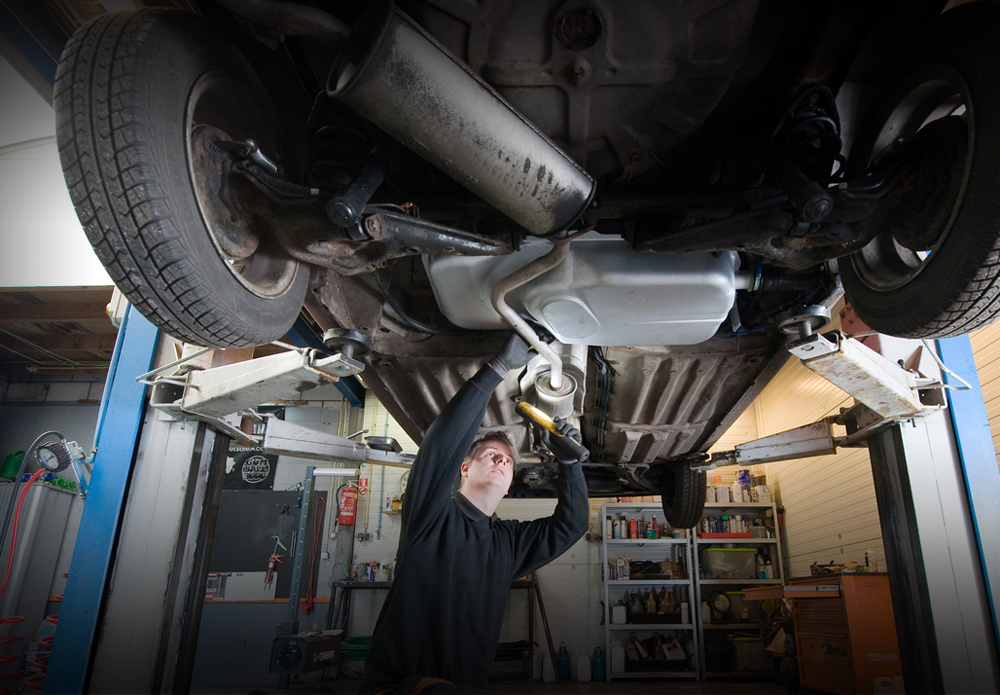The winter months can wreak havoc on your vehicle’s systems. Just like you prepare your car for cold temperatures, snow, and slippery driving conditions, there are several maintenance tips to consider in the spring when temperatures begin to rise. Performing annual vehicle maintenance and inspections will help you identify any small problems before they turn into larger repairs and expenses.
Following these spring vehicle maintenance tips will not only save you money and prolong the life of your vehicle—but it will also keep you safe on the road.

Spring Seasonal Maintenance Checklist
1. Tires
If you utilize snow tires in the winter months, it’s time to swap back to the summer/performance variety as soon as snowy and icy weather has cleared. If you drive on “all-season tires,” you can extend the life of the set by having them rotated seasonally.
2. Windshield Wiper Blades
Cold winter temperatures and road salt are rough on rubber compounds like windshield wipers. Spring is a good time to inspect and replace your wiper blades, if necessary. Be sure to check that your windshield wiper fluid is replenished, as well!
3. Cylinder Head Gaskets
To understand the overall health of the components used to seal your engine, you can use a simple material—cardboard. Place an appropriately sized sheet of cardboard under your vehicle’s engine assembly, then let it sit idle for a day or two before removing. From there you can read the “results” (the stains left on the cardboard) to identify if leaks are present and where they are coming from, including the engine oil, transmission fluid, or coolant. This is especially important for vehicle owners with asphalt driveways, as fluid stains on asphalt can be more difficult to spot.
If you notice oil or coolant leaking on or around your engine head, it could be an indication that your head gasket seal is compromised. You may also see water vapor or white smoke coming from your exhaust. In addition, the age of the head gasket may impact its sealing power. Over time, the gasket can break down and lose integrity.
When replacing a head gasket, it is recommended you work with an automotive professional to ensure that no other vehicle systems are impacted.
4. Vehicle Underbody
The salty buildup on the underside of your vehicle can be tough to tackle. The best option is to use a high-pressure sprayer, paying close attention to the front and rear bumper areas. After spraying off, inspect for signs of rust and treat accordingly so the rust doesn’t eat through any further. The most common place for rust to take hold is around the bumpers and wheel wells.
5. Oil Pan Gaskets
Replacing a leaky oil pan gasket is the most effective way to ensure your vehicle is running its best and receiving the oil it needs. If you detect oil leaking from your oil pan, you should first check that the drain plug isn’t loose and that the oil filter is properly in place. If the leak is still present, use your vehicle’s service manual or work with an automotive professional to replace the oil pan gasket.
6. Brakes
Ensure you thoroughly examine the brakes. Similar to your windshield wipers, brakes can take a beating during the winter months. Listen closely for any grinding, clanking, or squealing noises. Even if you don’t hear any noise, it’s recommended you take your vehicle to a mechanic for an inspection of the brake pads and drums on a regular basis.
7. Fluids
Check all of your automotive fluids and replenish, as needed. Winter forces your engine to work a bit harder, and the resulting condensation and moisture buildup can create wear. If you see a significant drop in fluid levels, it’s important to investigate. The missing fluid is often leaking or otherwise being consumed inside the engine. Keep up with your regular maintenance and if you change the oil on your own, be sure to use the correct formulation based on vehicle manufacturer.
8. Valve Cover Gaskets
If you notice low oil levels or leaks within your engine, it may be coming from the area where the valve cover meets the cylinder head. If oil is present either below the joint where the valve cover meets the cylinder head or just above it, then it’s time to replace the valve cover gasket. Age and miles driven can dry out and crack the valve cover gasket. If the seal is compromised, oil can escape from the inside. The valve cover bolts can also work their way loose, resulting in warping or cracking. Inspect your valve cover gaskets to ensure they are aligned and tightly sealed. This will ensure you aren’t leaking oil from your engine.
Dana Pro Tip:
“Remember to replace the valve cover grommets (if so equipped) during a valve cover gasket replacement. It is also important to check that the engine’s PCV system is working properly. If in doubt, replacing the valve is a good idea.” -Ron Rotunno, Sr Account Manager, Dana Aftermarket
9. Interior
On a sunny day, roll down your windows to refresh the interior of your vehicle. Remove and wash floor mats and liners, then vacuum and replace floor mats and liners once they are completely dry. Wipe down the windows, front console, and steering wheel with car-safe cleaning products.

Regular Maintenance and Leak Repair
When taking the time and effort to complete seasonal or interval gasket-related vehicle maintenance, you can be confident that gaskets from Victor Reinz® offer reliable, long-lasting sealing that’s OE quality or better.
Many manufacturers recommend a “30-60-90” schedule, which refers to inspecting or replacing certain components at intervals of 30 thousand, 60 thousand, and 90 thousand miles. Keep your vehicle maintenance up to date so your car’s performance isn’t negatively affected. Choose Victor Reinz gaskets for regular maintenance and leak repairs to keep your engine running its best!
Visit our streamlined e-commerce and parts locator platform DanaAftermarket.com or visit one of our distribution partners. Click here to find gaskets for your vehicle based on your location.
